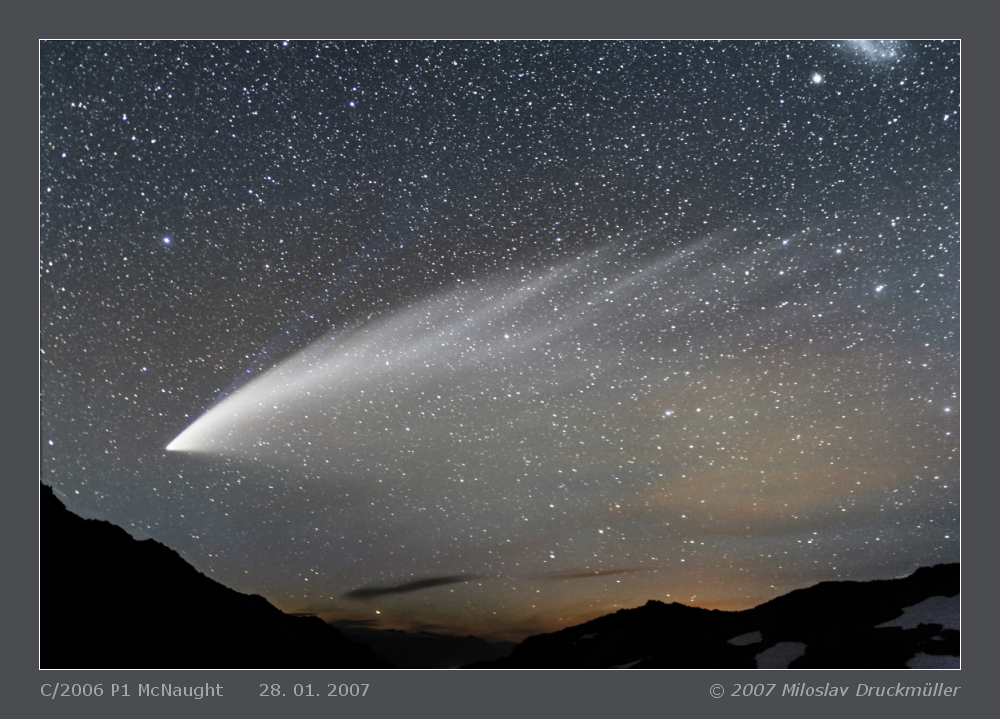
28. 01. 2007, 04:52
This image is a composition of 8 images with total exposure time of 4 minutes taken at the time when dawn
started and some high cirrus clouds are illuminated. The blue ion tail of the comet is clearly
visible - much better than in previous images. There are two reasons for that. In the first half of
the night, the comet was high above the horizon, but the Moon-lit atmosphere is of the blue color, which
makes the contrast of the blue ion tail very low. After the moonset, the comet was very low above the
horizon and the Earth atmosphere filtered out most of the blue light. Just before the dawn, the conditions
were the best to see the ion tail because the comet was beyond its lowest point high
enough above the horizon.
Click on the image or on the following reference to display the
higher resolution image version (1.1 MB, PNG format).
|
| Image | 3814-22.png |
| Date | 28. 01. 2007 |
| Time | 04:49 - 04:56 local time (08:56 - 08:42 UT) |
| Place | Nahuel Huapi, Patagonia, Argentina |
| Coordinate | S 41° 11.34', W 71° 32.95', altitude 2014 m |
| Optics | Tamron SP AF 28-75mm F/2.8 XR Di LD (setting 48mm, ap. 2.8) |
| Camera | Canon EOS 5D |
| Exposure | 8× 30 s (ISO 3200) |
| Processing | Composition of 8 images, dark frame and flat-field images applied |
| Copyright | © 2007 Miloslav Druckmüller |
|
Miloslav Druckmüller
Institute of Mathematics, Faculty of Mechanical Engineering
Brno University of Technology, Czech Republic
druckmuller@fme.vutbr.cz
|
Page last update: 18.3.2008
|
|

